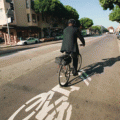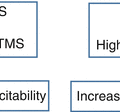© Springer International Publishing AG 2018
Stefano Masiero and Ugo Carraro (eds.)Rehabilitation Medicine for Elderly PatientsPractical Issues in Geriatricshttps://doi.org/10.1007/978-3-319-57406-6_4848. Rehabilitation of Older Patients with Chronic Kidney Diseases
(1)
Unit of Physical Medicine and Rehabilitation, Unit of Neuro-rehabilitation, IRCCS “Casa Sollievo della Sofferenza”, San Giovanni Rotondo, FG, Italy
48.1 Introduction
Population is dramatically changing as the elderly represent the fastest-growing demographic segment, and by 2050, Italian National Institute of Statistics (ISTAT) forecasts each of the three persons will be older than 65 years. The incidence of chronic kidney diseases (CKD) has been shown to increase with age, and nearly half of old people suffer from this condition [1]. CKD has been defined as the presence of kidney damage or reduced glomerular filtration rate (GFR) less than 60 mL/min/1.73 m2 that is present for 3 months or more [2]. According to GFR, CKD is graded in five stages from 1 to 5 with 1 indicating a GFR > 90 mL/min/1.73 m2 that represent kidney damage with normal or increased kidney function and 5 indicating a GFR < 15 mL/min/1.73 m2. This renal functionality is the expression of kidney failure and end-stage renal disease requiring hemodialysis. The prevalence of CKD varies from 23.4% to 35.8% in people aged 64 years or older [3]. However, as mentioned above because the elder population is dramatically growing, it is predictable that a larger number of old subjects suffering from CKD will need care and assistance. With respect, it is essential to plan and organize reforms of National Health System, making it more resilient to the impact of aging population with CKD in order to prevent frailty and to reduce disability. In elders, CKD may be associated with the development of disability regardless of body composition, physical performance, and comorbidity because well-functioning old people with CKD can develop functional limitation. The mechanism may be related to a heightened inflammatory state in CKD [4]. Furthermore, in comparison with those with normal renal function, the elderly patients with CKD are more likely to have increased comorbidities, walking impairments, and decrement in quality of life. Therefore, structured and well-resourced primary prevention programs based on reducing the risk factors for CKD and rehabilitative strategies adjunct to proper interventions during the renal disease could make a big difference in reducing the impact that CKD will predictably have on disability occurrence and related social cost.
48.2 Rehabilitation Role
Rehabilitation has been defined by the World Health Organization (WHO) as “the use of all means aimed at reducing the impact of disabling and handicapping conditions and at enabling people with disabilities to achieve optimal social integration.” This definition incorporates clinical rehabilitation but also endorses the concept of social participation as requiring a matching of the social environment to the needs of people with disabilities. The overall aim of rehabilitation is to enable people with disabilities to lead the life that they would wish, given any restriction imposed on their activities by impairments resulting from illness or injury as well as from their personal context [5]. Rehabilitation has been demonstrated effective and efficient in reducing the burden of disability and enhancing the opportunities for disabled people. Since body impairments and functional limitations can be multiform and variable, an individualized and tailored rehabilitative project has to be planned to reduce disability. The rehabilitation project should be tailored on the individual effective needs of CKD people considering stage of disease, complications, and comorbidities. Individualized rehabilitative project should list the procedures that will be applied to obtain functional recovery including type of exercises, rehabilitative techniques, and timing and duration of application. Furthermore functional goals that can be reached and the role of involved personnel staff should also be reported. The rehabilitative process is unique in treating people according to a holistic approach or a biopsychosocial model with the aim of supporting a person’s independent living and autonomy. As a patient-centered process, it has to be appropriate to optimize both activity and participation to ameliorate person’s quality of life.
48.3 Rehabilitation in Elder Subjects with CKD
Exercise capacity and quality of life are markedly impaired in chronic kidney disease. In the early stages of elder people suffering from CKD, musculoskeletal impairment and multi-organ disturbances can cause higher risk of mobility reduction. This condition could lead to a greater decline in gait speed with functional limitation [6]. Walking ability reduction and capacity to move to outside one’s home and neighborhood may cause lesser participation in family, religious services, and social activities. CKD old people can develop earlier these functional limitations compared to elders without CKD. Therefore, they could more prone to isolation and to conditions that promote reduced stimulation and motivation as well as mood and cognitive disorders. Furthermore, old patients with CKD are more likely to have decrement in quality of life compared to elders with normal renal function. Elders with GFR less than 45 mL/min/1.73 m2 have a decline in basic activities of daily living (BADL) greater than those without CKD [7]. Several rehabilitative strategies and approaches can be engaged in these people to delay the functional limitation and to ameliorate the residual abilities, in particular physical activity including aerobic and resistance exercises that produce positive effects on cardiorespiratory fitness, physical function, and self-reported health.
Elders with early stage of CKD and not severe limitations have to perform regular aerobic exercises. Among these, also resistance training exercises should be performed. This type of exercises has been demonstrated to reduce the malnutrition-inflammation complex syndrome of CKD improving physical performance, muscle mass, and quality of life in subjects with CKD [8] as well as in older hemodialysis patients. Of course, not all CKD subjects have to perform regular exercises, in particular subjects with severe comorbidities. In addition to that reported by American College of Cardiology Foundation/American Heart Association [9], several contraindications to exercise are specific to CKD patients such as symptomatic hearth arrhythmias, pulmonary congestion, and peripheral edema. On the other hand, specific rehabilitative interventions have to be tailored whenever multiple comorbidities such as multi-joint arthritis, sarcopenia, heart failure, and neurological disturbances contribute to the disability. Occupational therapy can be an essential rehabilitative strategy in those suffering from CKD and multiple comorbidities that affect functional abilities and ADLs. The use of assistive devices is a common intervention used to meet the goal of maintaining independence, and assistive tools are commonly recommended for ADLs. They include dressing sticks, long-handled shoe horns, long-handled sponges, button hooks, shower seats, and three-in-one commodes. These items have been shown to be effective in minimizing energy output and improving function with self-care and ADLs in patients with functional deficits from orthopedic and neuromuscular diseases. Correct techniques can save energy, increase time efficiency, and decrease frustration. Rehabilitative intervention can help to find the best technique or equipment for particular situation and recommend when a caregiver will have to provide more assistance. A further essential role of occupational therapy is environmental and home living adaptation for CKD elders with functional limitation and comorbidities who are at risk of falls that are the leading cause of injury and associated morbidity in elderly. In these subjects, proper programs include home hazard assessments by trained individuals, removal or modification of identified hazards, installation of safety devices such as handrails on stairs and grab bars on bathrooms, and improvements in lighting. Falls may lead to decreased mobility, hospitalization, depressive symptoms, functional decline, decreased social activity, and poor quality of life [10]. All older adults with and without CKD at risk of falling should be offered an exercise program incorporating balance, gait, and strength training. Since fall risk can depend on several factors, a single approach can be insufficient. To date, several trials have demonstrated that multicomponent and multifactorial interventions resulted in an approximately 30% relative risk reduction in fall rate [11]. Recently a different model has been proposed in caring elder CKD people that should change from traditional disease-based model to individualized patient-centered approach [12].
Stay updated, free articles. Join our Telegram channel

Full access? Get Clinical Tree





